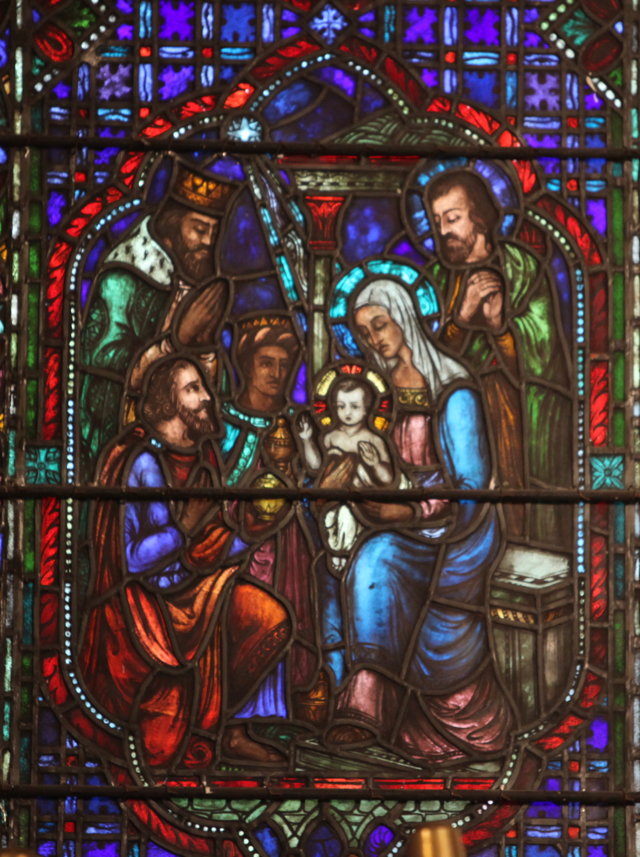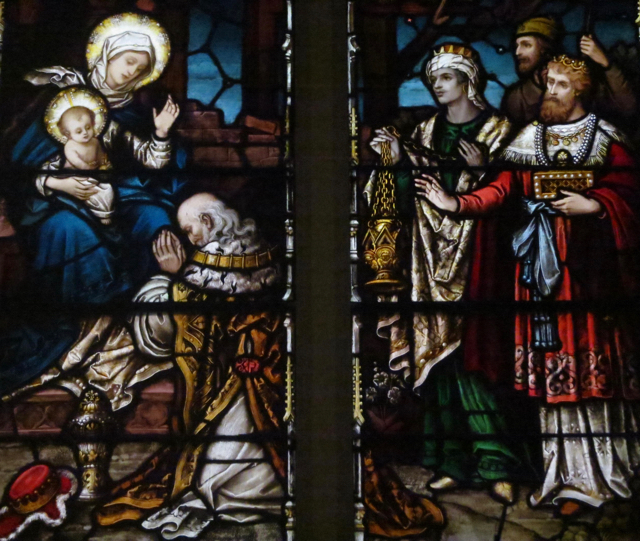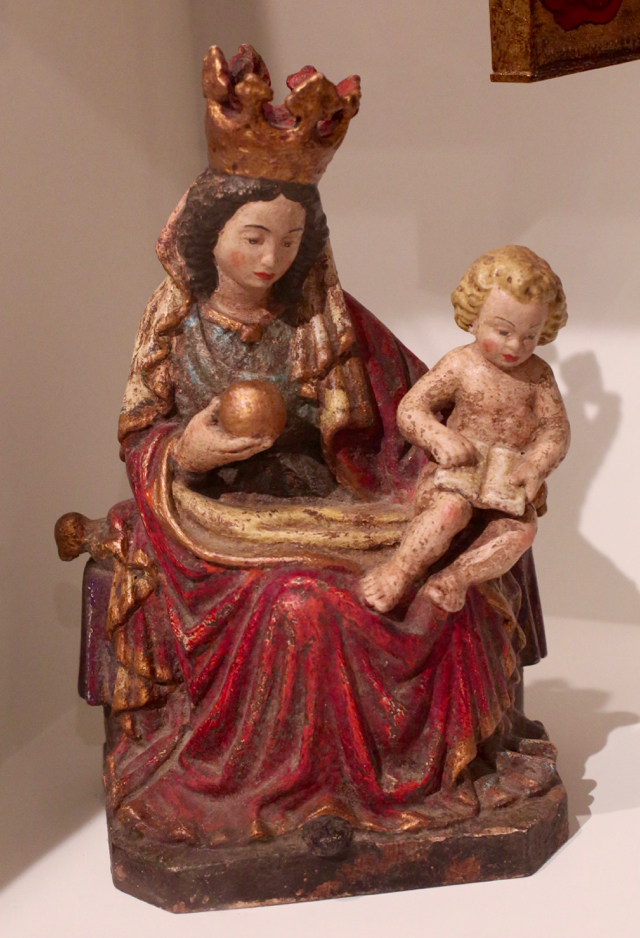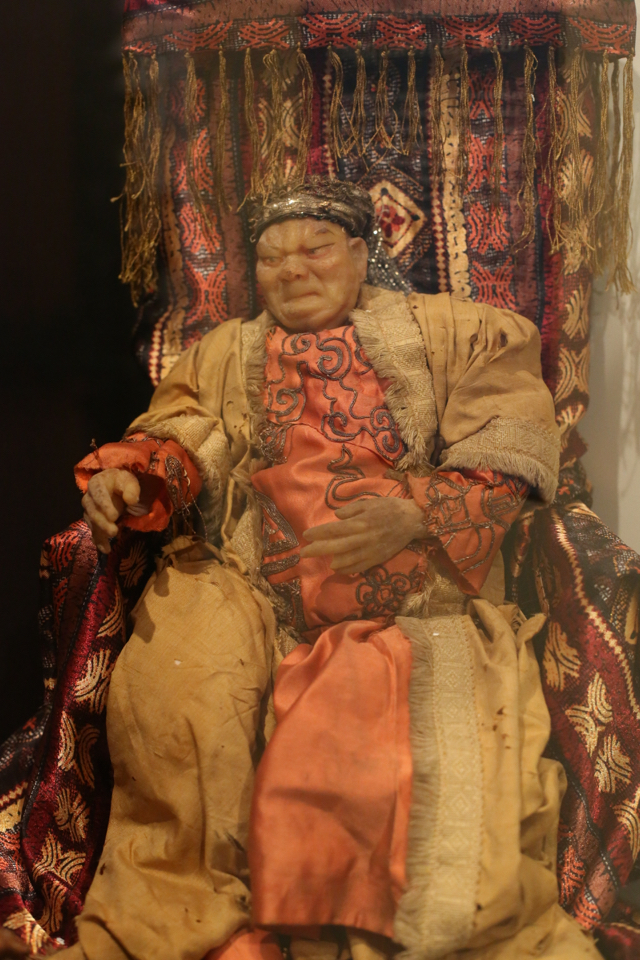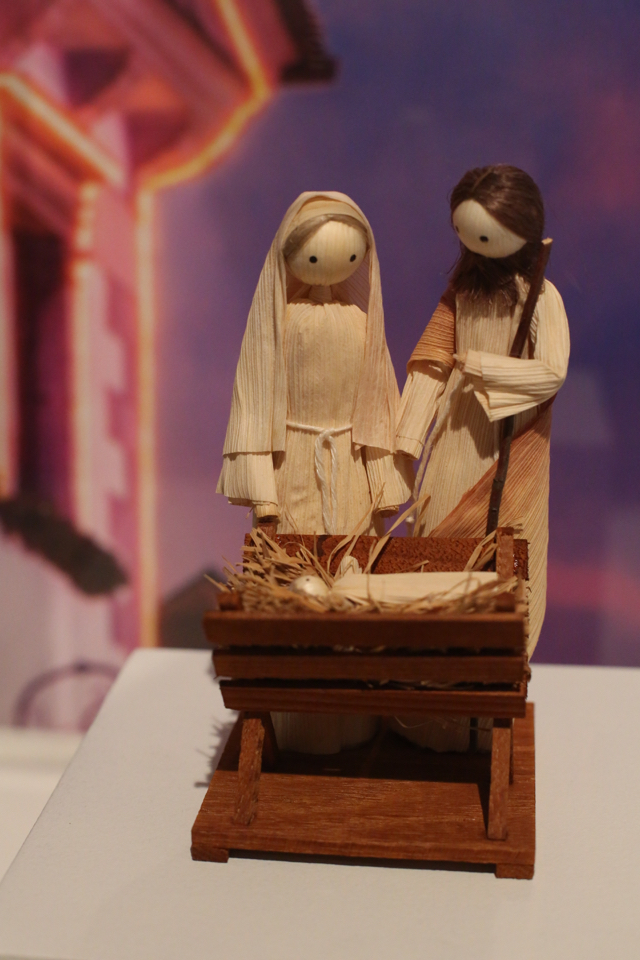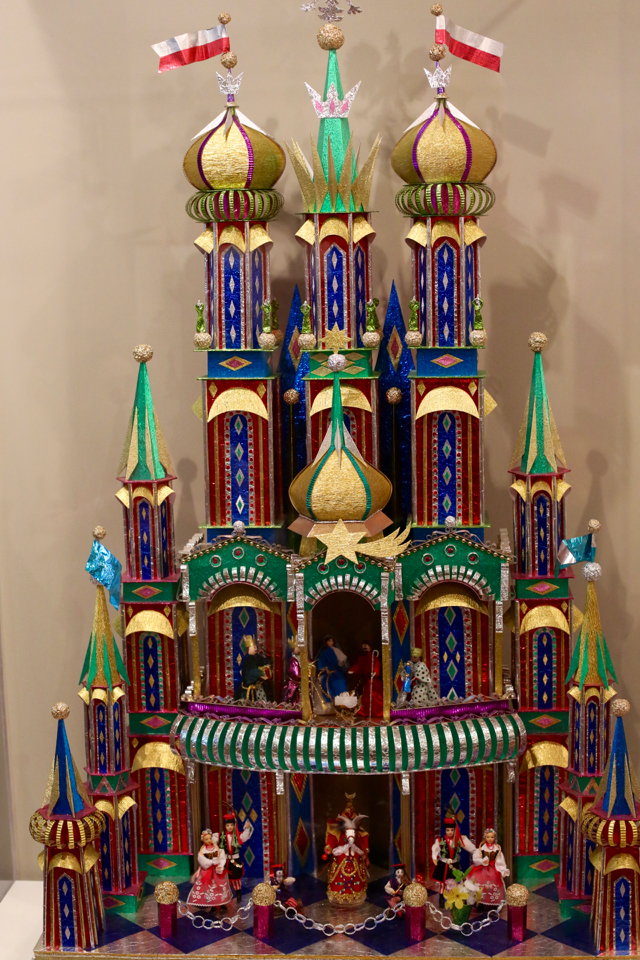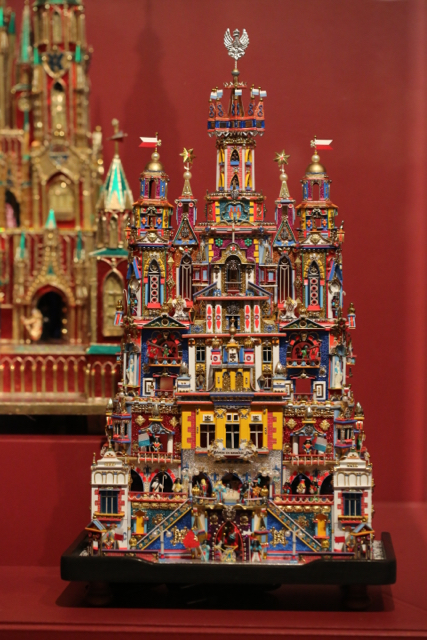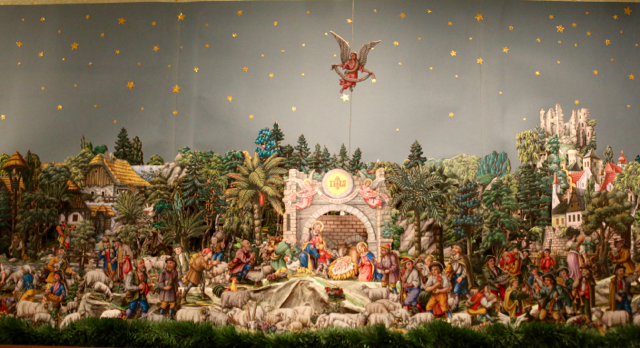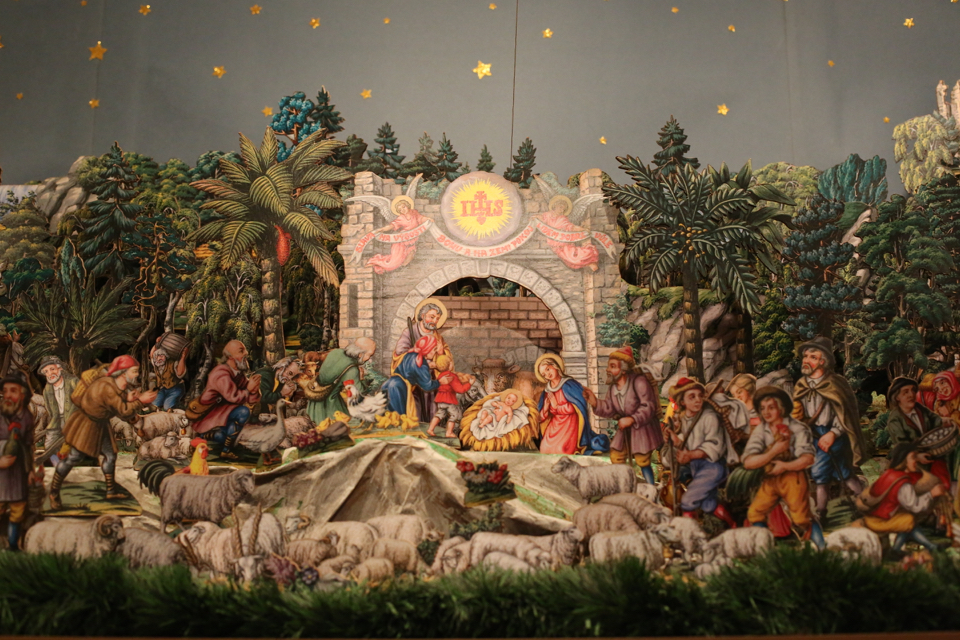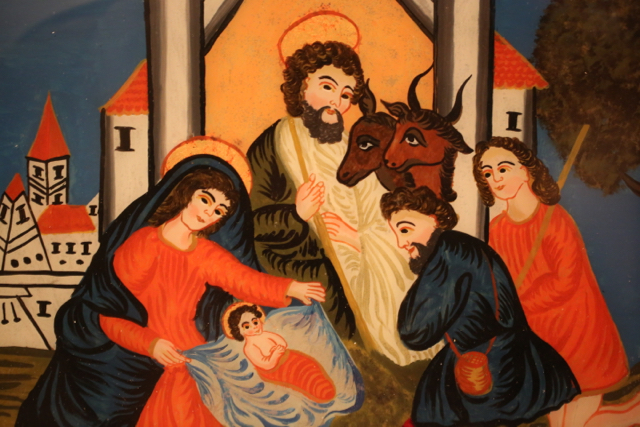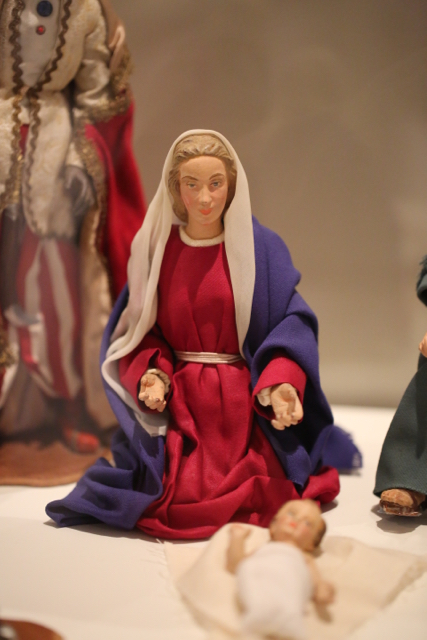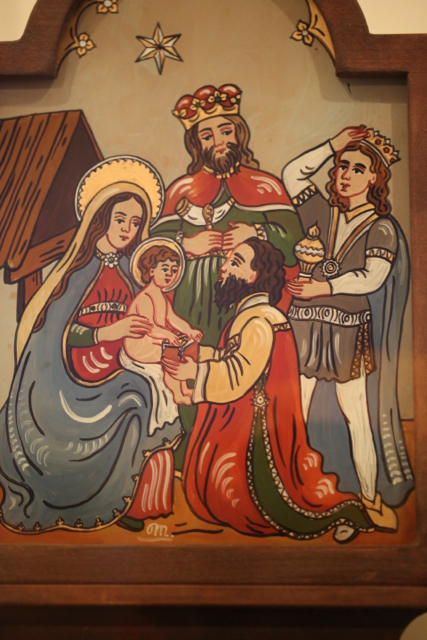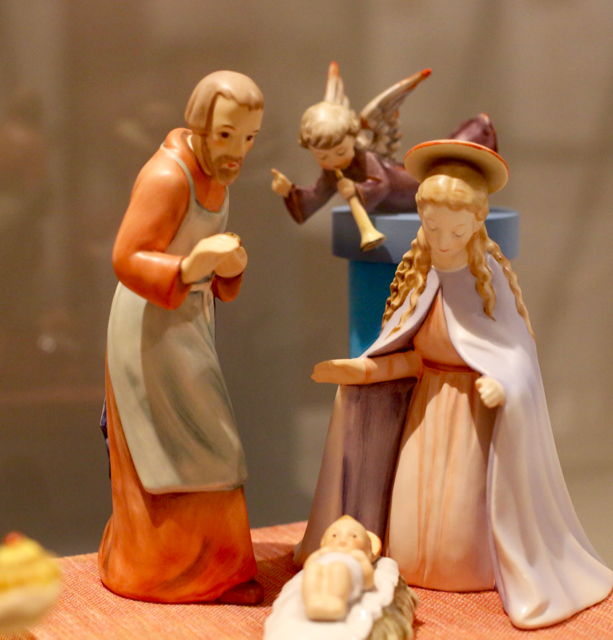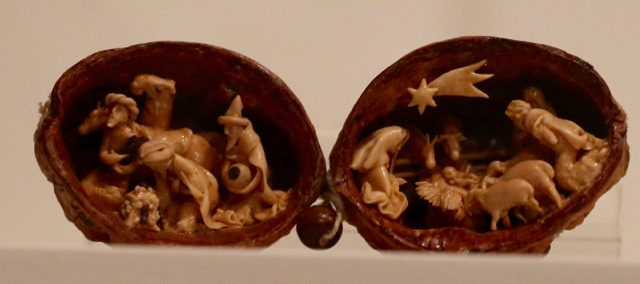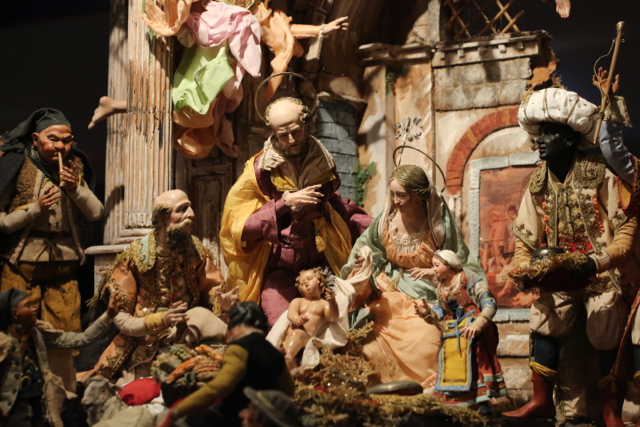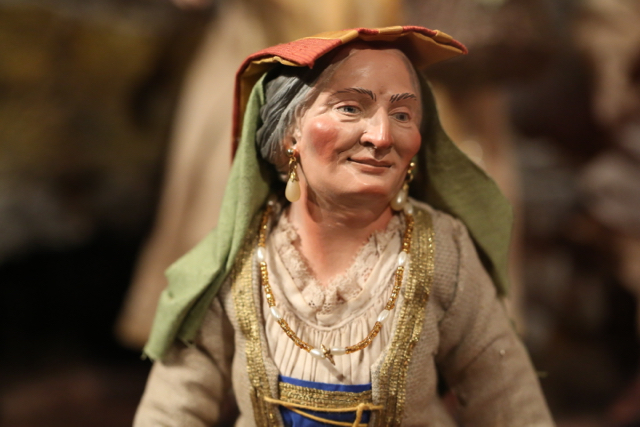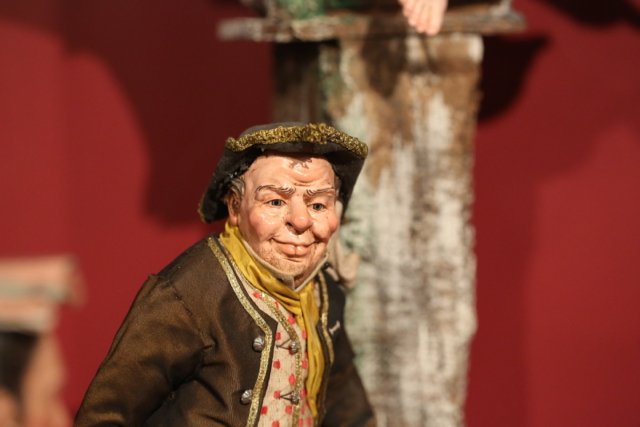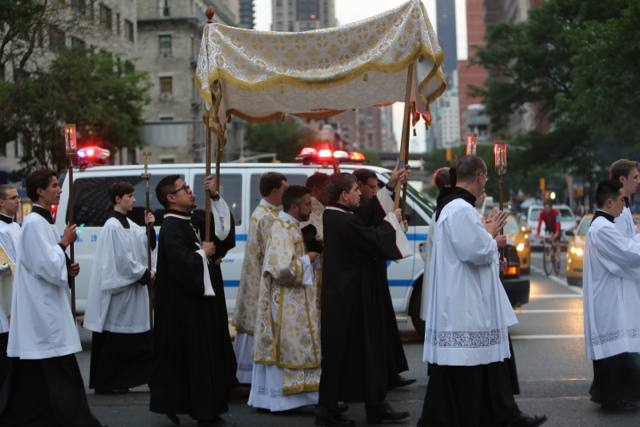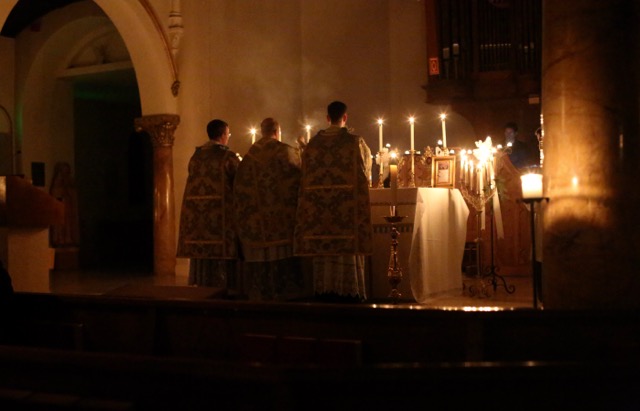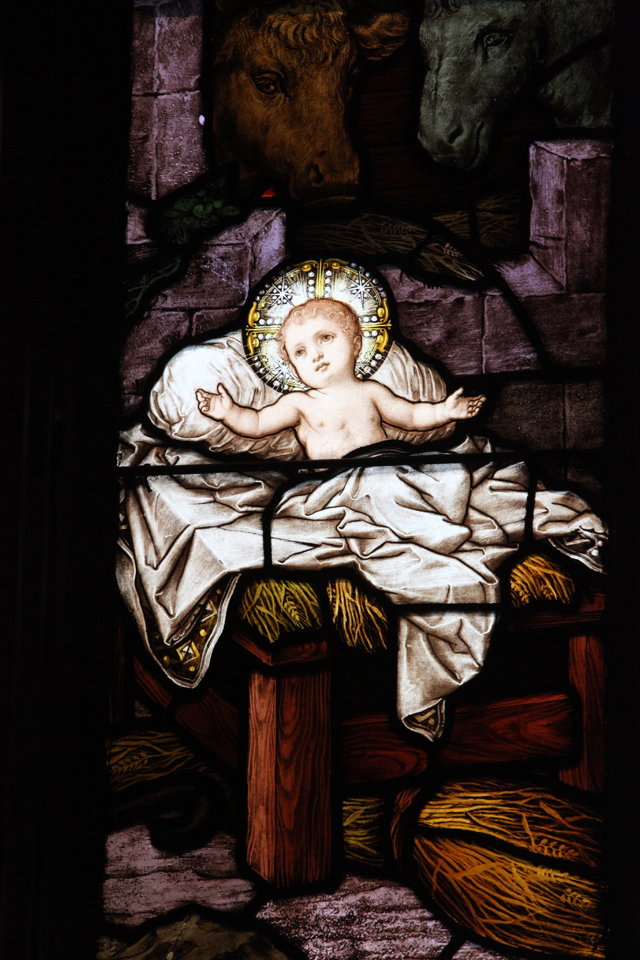The blessing of the chalk. Photo courtesy of Diana Yuan Yuan
7
Jan
Sermon for the Feast of the Epiphany
by Msgr. Ignacio Barreio
Christmastide is completed by the feast of the Epiphany which is the manifestation of the Lord to the whole world. Following an ancient tradition that originated in the Eastern Church, in this feast we not only celebrate the adoration of the child Jesus by the Wise Kings but also the baptism of Christ at the Jordan with the Trinitarian manifestation and the first miracle of Christ, the transformation of water into wine at the wedding of Cana. At the same the Church in her ancient wisdom celebrates these feasts in separate occasions so we can meditate better the value of these three separate events. The manifestations of God were many before the coming of Christ, they were many during the life of Christ and thanks to His marvelous generosity that comes to the aid of our weakness they have continued after the Ascension. You have an Epiphany every time a miracle transforms and changes the natural order that we can experience. Society sees an epiphany every time she is ruled by a holy king that reflects the light of God for all society to see and experience it. That is why in Spain many celebrate this feast as the feast of the traditional monarchy. Remember that a ruler obtains his legitimacy if he rules in accordance with God’s law and reflects His light on earth. We should also speak of an Epiphany when the sun danced in the sky of Fatima. As the faith seems to fade on this Earth we beg His divine assistance that He should send us more signs of His presence and action, if that is His divine will.
This contrast between a world that is in darkness and the light that comes from the presence of God in the world is well described in Isaias’ prophesy that we have just heard. In this feast we see Christ as the Light of World, the only light that can illuminate those who are walking in darkness and in the shadow of death, as Saint Gregory Nazianzeno reminds us. For the Greek Fathers of the Church, the worse tragedy of man is the ignorance of Christ. This ancient valuable insight, which is part of the traditional wisdom of the Church, is confirmed by the darkness that we experience in the contemporary world that really does not know about Christ and His saving power or it has an erroneous view of who Christ really is or worse has turned its back on Christ.
In Christmas the child Jesus was adored by a small group of shepherds, in Epiphany we celebrate the manifestation of the saving grace of the Lord to the whole world, who is adored by the three Wise Kings who represent the whole of humanity. Tradition has depicted them as one being Caucasian, and other being African and the third as being Oriental, so in them we have represented the three main ethnical groups of the world. Also another tradition sees them as being very young, another mature man and the third being a man of senior years. So in them the three ages of mankind are reflected.
The wise kings were guided by a miraculous star that God sent to guide them. Let us live to side naturalistic astronomical explanations that are not very satisfying and accept as miracle that changed in this particular case the laws of astronomical movements. This star St. Augustine explains in one of his Epiphany sermons has destroyed the false interpretations of the astrologers and the false beliefs of the adorers of stars. Today we would say that it destroys the proud knowledge of the adorers of science that in many cases it is a false science. We have to adore instead the creator of Heaven and of Earth. Prophesizing Jesus’ coming a new star shone on Heaven, marking His death the sun was obscured, in His last coming His light will outshine any light that we have experienced or we could experience. The Wise Kings were not searching for just another king of the Jews that would have been irrelevant to them they were searching the new king of Israel that was also the eternal king destined to rule for ever and ever.
In the gifts of the Wise Kings we have a very important message on the nature of the Divine Child. A message that was received by those great men before they saw Christ, before they started their voyage, when they were guided by the interior motion of God to selected their gifts. So before adoring the visible incarnated Lord, they started to adore Him in their minds and hearts with the hope of seeing him in a visible way. The incense proclaims the divinity of the child Jesus. Incense is offered primarily to God. Remember how many Christians in the early roman persecutions suffered martyrdom because they refused to offer a pinch of incense to the infamous and abominable idols that St. Agustin describes so well in the City of God. This is also reminder to us that the growingly tyrannical world in which we have to live is ready to persecute us because we refuse to pander to what is politically correct. This happens because we refuse to offer the incense of our conformity to many of the contemporary abominations that violate God’s natural and divine law. Myrrh was offered to him signifying his human nature. Also it is prophetic reminder of the myrrh mixed with wine that offered to Christ in his Passion and of the mix of myrrh and other species that were prepared to preserve the body of Christ by the women that assisted Him during His public ministry and stayed with Him until the bitter end. Gold represents the regality of Christ which it is clearly proclaimed in the liturgy of this feast and that it has been taught by the constant magisterium of the Church. It represents the tributes and taxes that are due to earthly kings or to other civil authorities. Also it makes a reference to the obligation that Christians have to support in a material way the Church and other Christian works of charity in proportion to their economics means and the duties they have towards their families.
Those symbolic gifts, should lead us to meditate on the gifts that we Christians ought to offer to God, as Saint Leo the Great reminds us on his Second Homily on the Epiphany. The Lord wants our serious commitment and our work, because the Kingdom of God is not given to the ones that sleep, but instead to the persons that make a serious and constant effort to practice the commandments and engage in corporal and spiritual works of mercy. In our particular case besides practicing the commandments the Lord, has given to us the particular vocation to proclaim the Gospel of Life, so in this Epiphany our gift to the newly born King is to strengthen our efforts to proclaim the integral truth of the Church on the Doctrine of the Faith and in a special way on life and family. Our efforts to live and proclaim the faith will be rewarded by our entry into His eternal kingdom but also will be instrumental in establishing His Social Kingdom on earth.
The Lord manifested Himself to the world, but after two thousand years this presence seems to have been muted. The Lord established His Church to carry on His manifestation until the end of the world, so the Church and ourselves as members of the Church we have to find ways to continue to present Christ’s saving message in all possible ways. We have to present this message in such a way that it will create the same admiration and marvel that it caused in its first listeners. At the same time accompanied by the liturgical beauty that lead to the delegates of Kiev to convert after experiencing the Divine Liturgy at Santa Sofia in Constantinople. The grace of the Lord in the same way that converted the hearts of the wise man before they saw the child Jesus, also is operation in the hearts and minds of many of the men our days, but in same way that those wise man were confirmed in their interior faith by seeing the child, the men of our days need to see our convincing testimony so that the interior movement of the soul might be confirmed. Here with all humility we petition again to the Lord that in these tragic times of our history He would confirm with special signs the faith that we should present.
At the beginning of the year we wish each other a Happy and Prosperous New Year. Be certain that the year that we are starting, will be happy and prosperous if we follow the ways of the Lord. So what I sincerely wish to all you is that you truly accept the Reign of the Lord in your hearts and minds so that He can truly rule society then all the rest that we need will be added to us because no one defeats the generosity of the Lord.
May the Lord Bless you and Keep you.
(The stained glass window is in St. Elizabeth of Hungary Church, Manhattan, recently closed by the Archdiocese of New York)
3
Jan
Introduction to Chant Course
Mondays from 7:00-9:30pm, January 18 – May 2
St. Joseph’s Seminary, Yonkers
Seminary of the Immaculate Conception, Huntington
Taught by Dr. Jennifer Donelson, DMA
Parish musicians and other interested students are invited to attend this introductory course on the subject of chant. Opportunities for study and music making throughout the course. Special tuition rate for parish musicians: $750 (3 credits)/$500 (audit).
For more information and to register: nyliturgy.org
The following churches will be offering the traditional Mass for the Feast of the Epiphany on Wednesday, January 6. Please notify us, if you know of a church that is not on our schedule. The stained glass window is in the Church of the Holy Innocents, New York.
St. Mary Church, Norwalk, CT
5:30 p.m.
Hymn at the Procession: Bethlehem, of Noblest Cities (Stuttgart)
Missa Fons bonitatis (Vatican Gradual, Mass II)
Gregorian Mass of the Epiphany: Ecce advenit
Hymn at the Offertory: Crudelis Herodes (plainsong, mode iii)
Church of Holy Innocents
Solemn Mass, 6:00 pm, blessing of chalk
Our Lady of Mount Carmel, 448 East 116th St., New York, NY
7 pm, Solemn Mass and distribution of blessed Epiphany water, chalk and frankincense
St. John the Baptist Church at 4987 Rt. 81 in Greenville, NY
Solemn High Mass, 6:30 pm
St. Anthony of Padua, Jersey City, NJ
Sung Mass, 7 pm
Our Lady Queen of Peace, Maywood, NJ
7:30 pm
Chalk is prepared today for blessing at Holy Innocents Church (photo courtesy of Eddy Toribio)
2
Jan
Mass of the Octave of Christmas
By Mons. Ignaçio Barreiro Carambula
Today we celebrate a multiplicity of feasts. In the first place, we remember the Octave of Christmas, the end of the eight day celebration of the feast of Christmas. All important feasts, following a tradition that has long Old Testament roots, are celebrated during several days. In our secularized society we anticipate Christmas forgetting Advent and we do not celebrate enough the eight days of Christmas. So we should sing carols and hymns during these eight days that make us live and relieve with gratitude this great grace which we received at the birth of Christ which is the beginning of our redemption and salvation. We should also see this feast as part of the joyful twelve days of Christmas that they are introduced with the Vigil of this most holy day and are completed with the Epiphany.
In the epistle St. Paul underlines how the grace of God Our Savior appeared for the salvation of all men. It was manifested first at Christmas with the miraculous messages of the angels that lead the shepherds to come and adore the newly born Jesus, it was manifested at His circumcision, at the Epiphany and then through the whole of the public life, death and resurrection of Christ. This grace is brought to all men of God will as the angels announced to the shepherds, so we have to endeavor to be men of good will to receive it. This fundamental teaching has to be read and meditated many times. This grace of Christ still has to be manifested to millions that have never heard of Christ, or have received sad distortions of His doctrine from the enemies of the faith. We still have to fulfill in a complete way the commandment that Christ gave to the apostles before His Ascension, “All power in heaven and on earth has been given to me. Go, therefore, and make disciples of all nations, baptizing them in the name of the Father, and of the Son, and of the Holy Spirit, teaching them to observe all that I have commanded you. And behold, I am with you always, until the end of the age.” (Mt. 28:18-20) Christ who first came to the Earth at His birth, remains with us in many ways, the main being His real presence in the Most Holy Eucharist, second in His direct interventions in history and third in our belief that leads us to follow His teachings and act in society in accordance with His inspiration.
A full translation of the last verse of this passage should read in the following way, “Declare these things; exhort and reprove with all authority. Let no one disregard you.” These words have two meanings. They contain a direct instruction to Titus, the recipient of this letter, to be a strong and faithful bishop. But in this sentence St. Paul is also speaking to the Church in our times. He is exhorting the Church, to present in a courageous way His message of salvation to contemporary society without being ashamed of any part of His teachings.
Second, we celebrate the circumcision of the Lord. The blood of the Child Jesus places a seal on the New Year. This sacrifice of Jesus provides a prophetic anticipation of the Sacrifice of the Cross. In this sacrifice He shed some drops of blood, in Calvary all His blood will be poured for our redemption. Of this moving sacrifice of the child Jesus we will try to meditate in depth on this coming Sunday, on the Feast of the Holy Name of Jesus.
Third, we celebrate an ancient feast of Our Lady. We can see it in the ancient and beautiful collect of this Mass where after remembering the fruitful virginity of the Blessed Virgin that has bestowed on us the rewards of eternal salvation we petition that we may experience her intercession. Certainly many of you have experienced her intercession in the past year. The Marian nature of this feast is also brought to our attention in the Post-communion prayer. This awareness of her perpetual help will strengthen our faith and our love for her and fortify our hope that one day we might join her in Paradise. This Marian feast was most likely introduced in the Roman Calendar to celebrate the consecration of the Basilica of St. Maria Antica in the Roman Forum. It was built in the 5th century in the Roman Forum, and for a long time it was part of the monumental access to the Palatine imperial palaces. This church contains the earliest Roman depiction of Santa Maria Regina, the Virgin Mary as a Queen, from the 6th century. The church was partially destroyed in 847, when an earthquake caused parts of the imperial palaces to collapse and cover the church. Recently it was restored and it can be visited.
Fourth, we celebrate the beginning of the secular year asking the Lord to make it truly a year under Him, a year of the Lord, to make it a year under his social kingship. Today we pray to open our souls to receive all the graces that the Lord has prepared for us to serve Him faithfully on the coming year, being fully committed to practice and to promote the faith. My suggestion is that we should read again with attention the Encyclical Letter Quas Primas of Pius XI of December 11th 1925 in which he established the feast of Christ the King and taught us how it is our duty to establish His social kingship.
At the end of the Mass we will sing the hymn Veni Creator to the Holy Ghost, imploring divine assistance for the whole of the coming year. A plenary indulgence under the usual conditions is granted for all who participate in this prayer.
Today we seek the intercession of the Blessed Mary Queen of Heaven and Earth to be able to establish the kingship of Her Son in the coming year.
May the Lord Bless you and Keep you.
This year’s exhibition of creches shows those of Central Europe – as well as the Museum’s own growing permanent collection. The exhibition closes on January 31. For descriptions and directions see HERE and HERE.
(Above) King Herod from a Nativity scene set that covers feasts and events extending beyond Christmas. (Below) The creches are in many different media.
(Above and Below) Polish nativity scenes from the vicinity of Cracow, situating the Holy Family in an elaborate architectural setting.
(Above and below) A large scale paper Nativity scene.
(Above)Reverse glass painting is typical of Central Europe.
(Above) A famous Hummel Nativity scene. (Below) A miniature creche carved in a nutshell.
(Below) Finally, on display is the large Neapolitan Nativity set from the Museum’s permanent collection.
28
Dec
It’s still time for an end-of-year donation to the Society of St Hugh of Cluny! It is only because of our generous members that we are able to sponsor traditional liturgies, promote the Catholic musical heritage and organize conferences involving leading speakers – often from outside the United States. In 2016 we intend to do much more even than this year – but we need your help.
This month we have moved into the 21st century and have added a Paypal button with which donations can be made. It can be found to the right side of the screen.
Donations to the Society of St Hugh of Cluny (a 501 (c) (3) organization) are deductible as provided by law.
St. Hugh of Cluny was a major sponsor of the Sacra Liturgia Conference in June.
28
Dec
Bishop Caggiano will preach at Mass in the Extraordinary Form at St Mary Church in Greenwich on Sunday, January 10th at 2 in the afternoon.
28
Dec
January 1 is a holy day of obligation. The following churches will be offering the traditional Mass.
St. Mary Church, Norwalk, CT
Jan. 1, Solemn Mass, 5:30 pm.
St. Stanislaus, New Haven, CT
Jan. 1, 2 pm, low Mass
St. Matthew’s, Dix Hills, NY
Jan. 1, 10:30 am (in the chapel)
Church of the Holy Innocents, New York, NY
Jan. 1, 1 pm
St. Agnes, New York, NY
Jan. 1, 11 am, high Mass
St. Anthony’s Church, Bronx, NY
Jan. 1, 8:30 am Low Mass
St. Patrick’s, Newburgh, NY
January 1, 3:00 pm.
Immaculate Conception Church, Sleepy Hollow, NY
Jan. 1, 3 pm, low Mass
St. Anthony of Padua, Jersey City, NJ
Jan. 1, 9am
Our Lady of Fatima Chapel, Pequannock, NJ
7:00 am, 9:00 am, 11:00 am, 5:00 pm
Oratory of St Anthony of Padua, West Orange, NJ
9:00 am, 11:00 am, 3:00 pm
The stained glass window is in Holy Name of Jesus Church, New York, NY
Contact us
Register
- Registration is easy: send an e-mail to contact@sthughofcluny.org.
In addition to your e-mail address, you
may include your mailing addresss
and telephone number. We will add you
to the Society's contact list.
Search
Categories
- 2011 Conference on Summorum Pontifcum (5)
- Book Reviews (95)
- Catholic Traditionalism in the United States (24)
- Chartres pIlgrimage (17)
- Essays (176)
- Events (670)
- Film Review (7)
- Making all Things New (44)
- Martin Mosebach (34)
- Masses (1,343)
- Mr. Screwtape (46)
- Obituaries (15)
- On the Trail of the Holy Roman Empire (22)
- Photos (347)
- Pilgrimage Summorum Pontificum 2021 (7)
- Pilgrimage Summorum Pontificum 2022 (6)
- Pilgrimage Summorum Pontificum 2023 (4)
- Sermons (79)
- St. Mary's Holy Week 2019 (10)
- St. Mary's Holy Week 2022 (7)
- St. Mary's Holy Week 2023 (7)
- St. Mary's Holy Week 2024 (6)
- Summorum Pontificum Pilgrimage 2024 (2)
- The Churches of New York (198)
- Traditionis Custodes (49)
- Uncategorized (1,369)
- Website Highlights (15)
Churches of New York
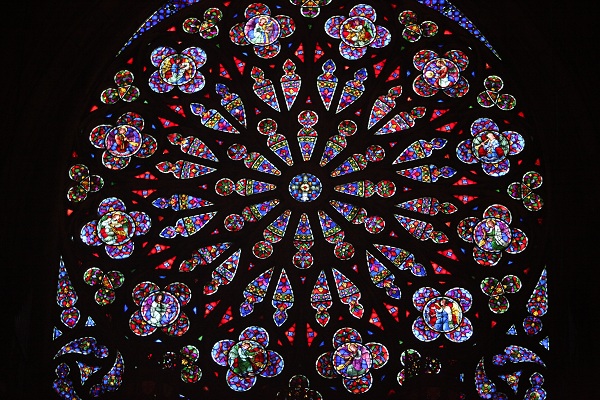
Holy Roman Empire
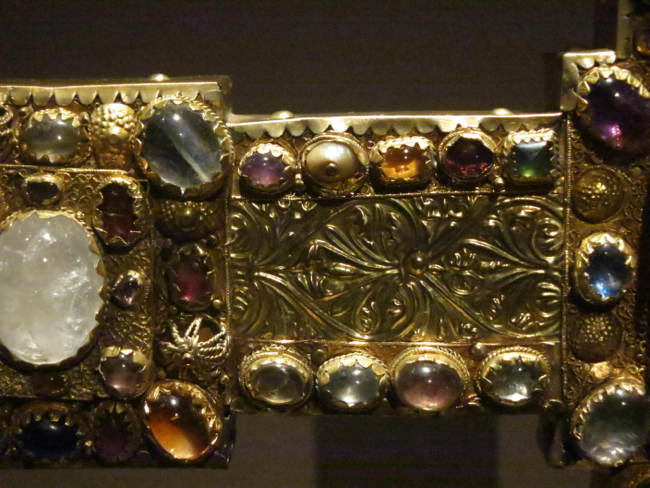
Website Highlights
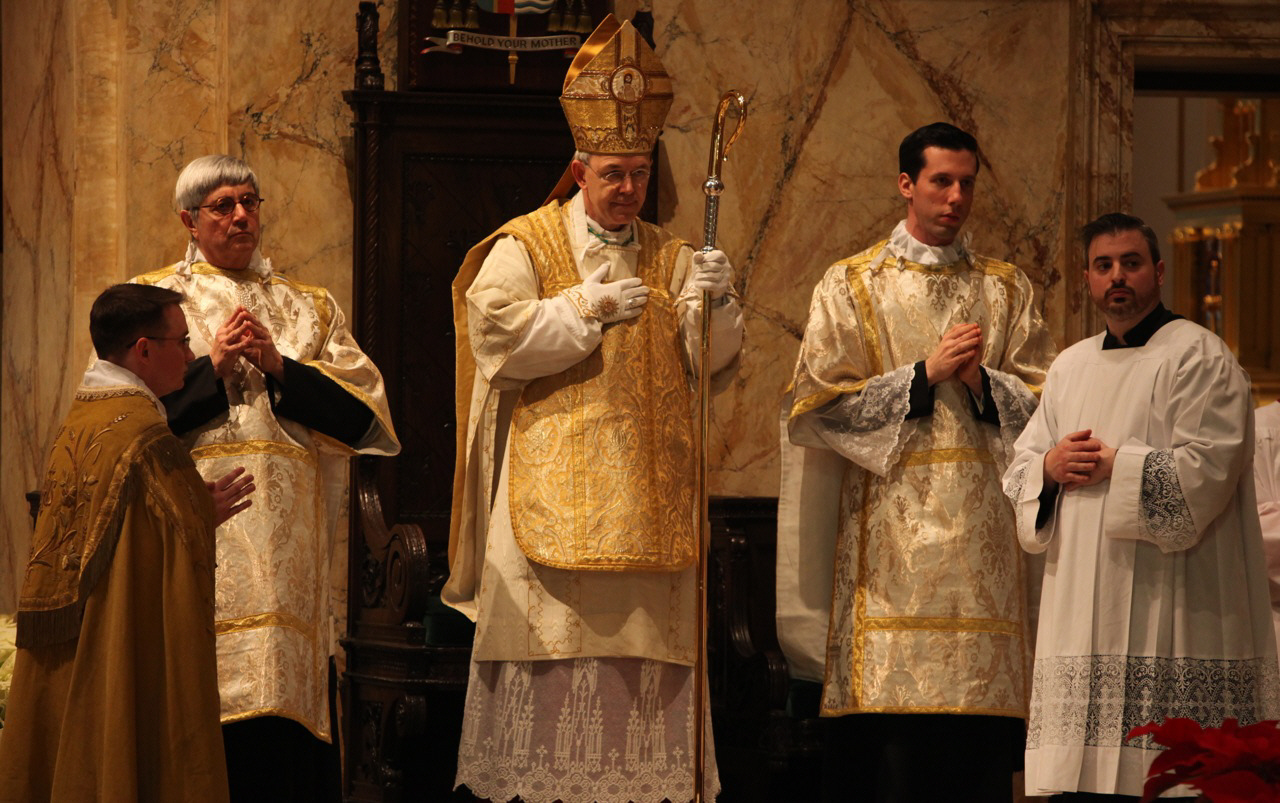
Archives
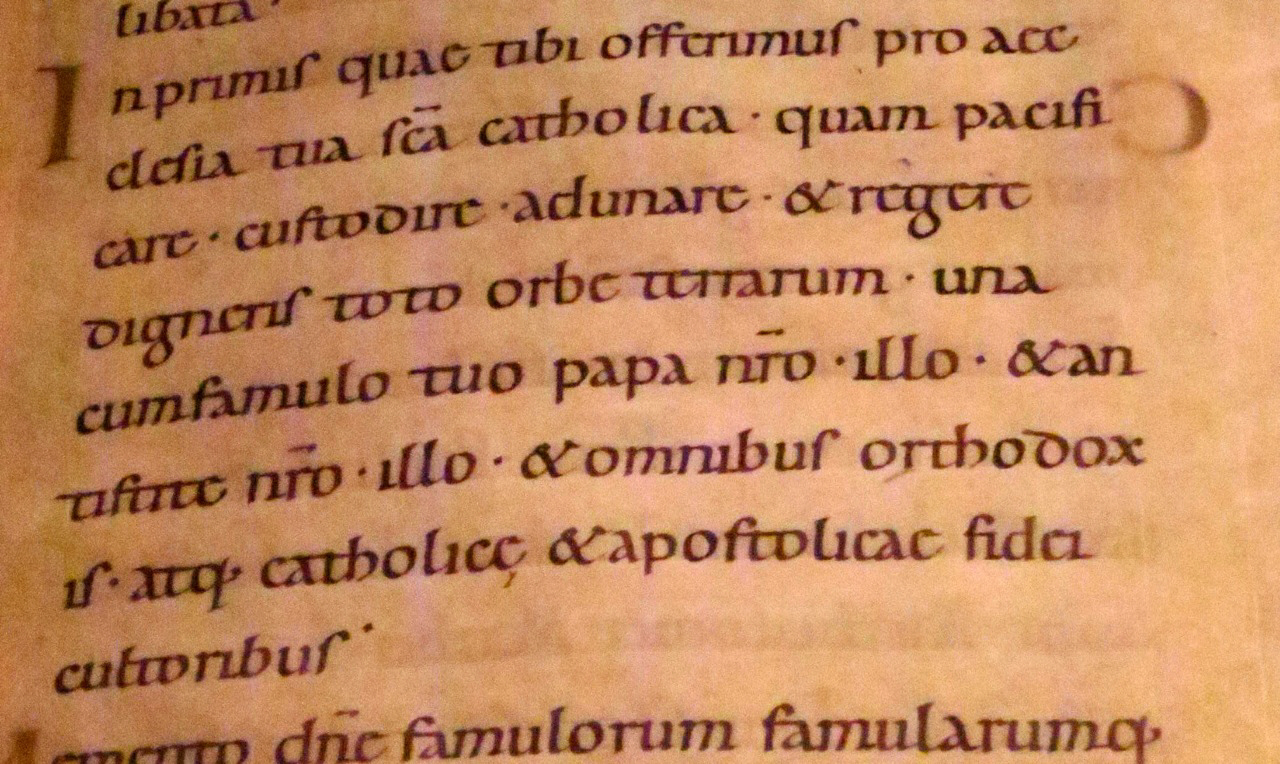
[powr-hit-counter label="2775648"]

